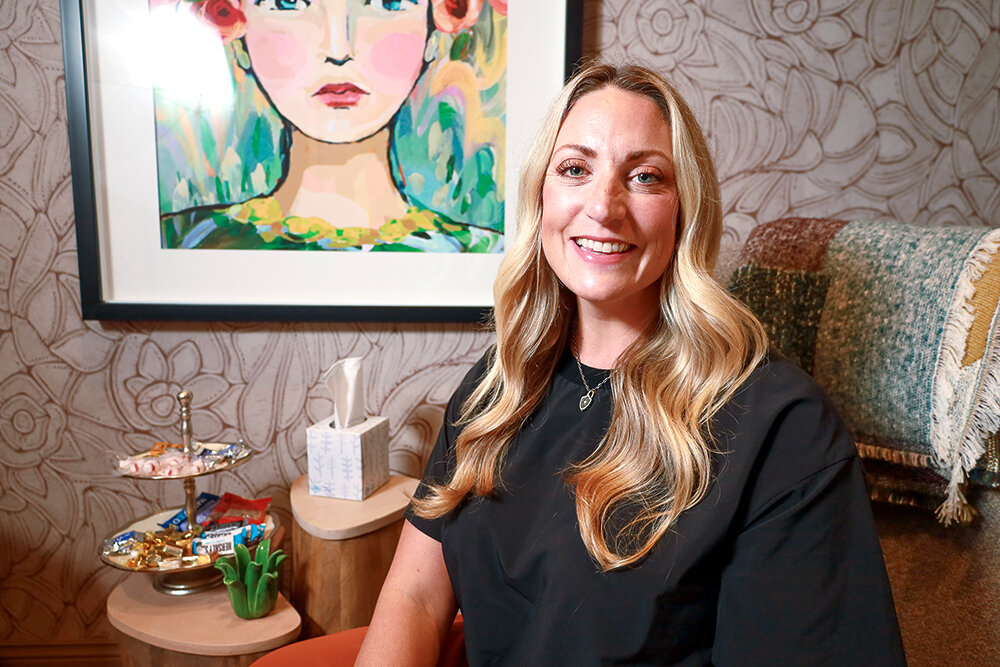YOUR BUSINESS AUTHORITY
Springfield, MO
YOUR BUSINESS AUTHORITY
Springfield, MO

The National Cancer Institute has a goal that, by 2030, 80% of women within the 50 to 74 age range get screened for breast cancer. Right now, it’s about 76% nationwide. What are the reasons women don’t get screenings?
I’ve seen places in the country that are still only at 33%. I think they are scared to get screened. They don’t want to know on some level. Some people have gone and had a screening and had a bad experience. People don’t have access or maybe don’t feel like they have access to getting screened, whether they don’t have insurance or can’t pay out of pocket. There’s probably a bunch of reasons. I’d be surprised if we’re up to 70% of the population when you take Springfield and the immediate outlying areas. It’s hard to find that specific statistic. We just have seen a lot of women who are in their 50s, in their 70s that have never gotten screened. I will say, too, a lot of women during the pandemic stopped getting screened.
In opening this clinic in October 2022, was it a goal to eliminate barriers to screening?
Our overall goal is to get more women in the area into regular screenings where they’re coming every single year from the age of 40, some women earlier if they have a higher risk. We want them looking forward to it almost so that they’re not going to miss three, four, five years. In doing so, we know that we find cancer smaller before it spreads, and it’s easily treatable. Lives are saved. To do that, care, comfort and convenience are our three things. So, care, everything here is based around how we’ve always wanted to take care of patients. There’s so many irons in the fire in those big institutions that you don’t have as direct of an impact on patient care as you maybe want to. Comfort, everything is geared toward reducing anxiety. The ambiance, all five senses are being appealed to, you have essential oils diffusing, you have the big warm, comfy spa robe, infused water, gourmet snacks. I grew up having white coat syndrome where I was always terrified to go to the doctor. I know, it’s ironic. But I still get nervous in those hospital and clinic settings, and I know a lot of people are like that. So, a spa-like experience but with that top-notch technology. Then, obviously, same day results are huge. It’s very rare. If we need a diagnostic screening, we do it the same day, that same appointment. Occasionally, we can even [do a] biopsy same day. Those same day results can be a game-changer for just reducing anxiety in someone who ends up with a normal (screening) and for reducing time to treatment in someone with breast cancer.
It does make me question the cost to patients. Does the spa-like environment and same-day results increase cost?
To patients, it’s the same. They’re using their insurance or they’re paying out of pocket, our cash price. If you have insurance, (preventative screenings) are covered. Medicare reimbursement rates are the same. The cost part of it comes on us more. It’s a different type of model that takes more time. You can’t see as many patients a day if you’re doing that kind of one-on-one consulting with every patient. As we grow, we’ll certainly keep the model, but we may have to bring on extra support staff. We’re not in network yet for all insurances. That’s been a process of building up who we are in-network for and it’s taken a little bit longer than we were told and expected, but I think that’s going that way for everybody across the country right now. We also have very low cash prices. In general, we do 3D mammograms, which is the best, and it’s $280.
Are you seeing an increase in breast cancer?
We are seeing an uptick. And with younger women, even younger than 40. We’re kind of trying to evaluate, how do we get these women into the fold? So, what we are focusing on this year are the (American College of Radiology) guidelines that came out around May that every woman needs to have a risk assessment done around age 25. Depending on your family history or certain things in your family or your personal history, you may benefit from screening earlier. I just diagnosed the youngest patient in my history with breast cancer recently. She was 27.
What’s the size of your clinic now and do you have a goal for growth?
For mammography clinics, the volume is based on number of units. Typically, you can get about 20 patients on our machine a day. That would be rocking and rolling. We’d still be able to do our model how we want to do it. The technologists don’t get burnout at that level. Then as you grow above that, you get another machine. We’re probably about halfway there. We’ve been slowly building. We have room to grow in this space for the next 10 years.
When you meet that volume of 20 patients per day, is that when the clinic starts making financial sense and turning a profit?
That’s when we’ll stop working in Quincy, Illinois, and St. Louis, and we’ll be able to just be here and grow it. We’re still a little bit in that time period where you just have to have faith that it’ll work and just do it for the right reasons and keep chugging. It’s quite an investment to put this space together, the way that it looks and the touches. A mammogram unit ranges from $200,000 to $500,000.
Moseley’s Discount Office Products was purchased; Side Chick opened in Branson; and the Springfield franchise store of NoBaked Cookie Dough changed ownership.